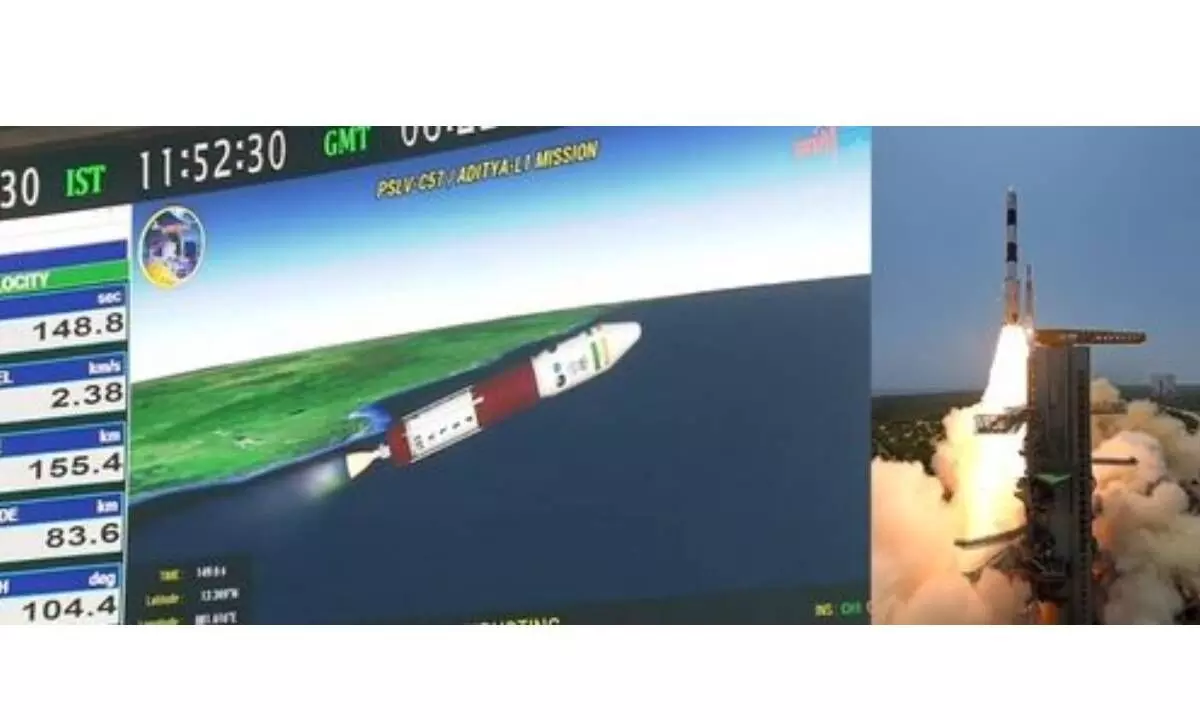Udaipur behind 1 of 7 Aditya L-1 payloads
Scientists from Udaipur are extending their significant contribution to the solar mission Aditya L-1
image for illustrative purpose

Jaipur Udaipur, counted among the top travel and wedding destinations in the world, which also witnessed many celebrities tie the knot, is now ready to script a success story in space segment as well.
The scientists from Udaipur are extending their significant contribution to the solar mission Aditya L-1. They have contributed in the development of one of the seven payloads fitted in Aditya L-1.
One of the team members, Dr Anil Bhardwaj says that the name of this payload is Aditya Solar Wind Particle Experiment (ASPEX). With the launch of Aditya L-1 after 127 days, scientists of Udaipur Solar Observatory will be able to study every activity of the Sun for 24 hours. Now only 10 hours are available for research.
The information that Aditya L-1 will send on the activities happening on the Sun, will be studied with a super computer. Udaipur Observatory is equipped with four world hi-tech telescopes namely MAST, SPAR, CALLISTO, and GONG. Scientists understand the reasons for the changes in the Sun's magnetic field, explosions and the effect on space weather from the data and pictures collected from them.
Scientists of Udaipur Solar Observatory -- Prof. Shibu K Mathew, Ramit Bhattacharya, Bhuvan Joshi and Kushagra Upadhyay - state that the Sun appears bright like a ball of fire, but solar flares, mass ejections are also visible when viewed with special telescopes of high resolution.
For the study of these activities of the Sun, the team of scientists of this observatory has been doing research for the last five decades. This observatory is one of the world's top institutions studying the mysteries of the Sun.
In fact, scientists will keep an eye on the movements of the Sun from the Fatehsagar lake.
Professor Bhuvan Joshi of Udaipur Solar Observatory said that when Aditya L-1 reaches its point, scientists from Udaipur will study its data.
It needs to be informed here that the Udaipur Solar Observatory is operated under the Ahmedabad Physical Research Laboratory. This observatory will script a success story with Aditya L-1 Solar Mission.
Bhardwaj, meanwhile, said that explosions keep happening on the Sun. In every explosion, million mega tons of energy is released like a nuclear device, which is capable of causing devastation in a 200 mega meter area on the surface of the Sun.
Due to the strong magnetic field in many places on the Sun, structures like dark spots are formed, which are called sunspots. These are studied by multi-wavelength observation with the help of MAST telescope. This observatory has been studying astronomy and astrophysics, solar physics, space and atmospheric sciences among others.

